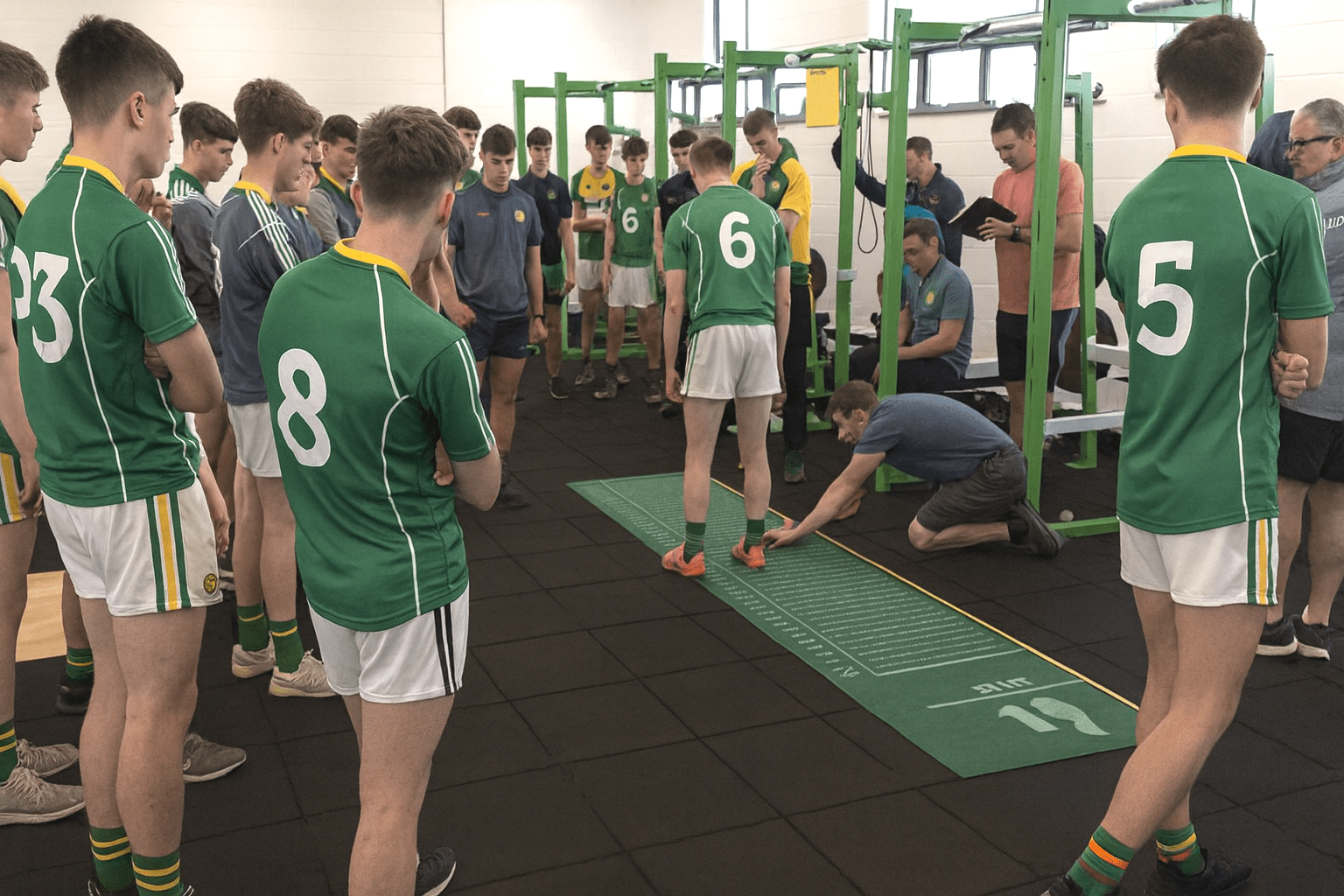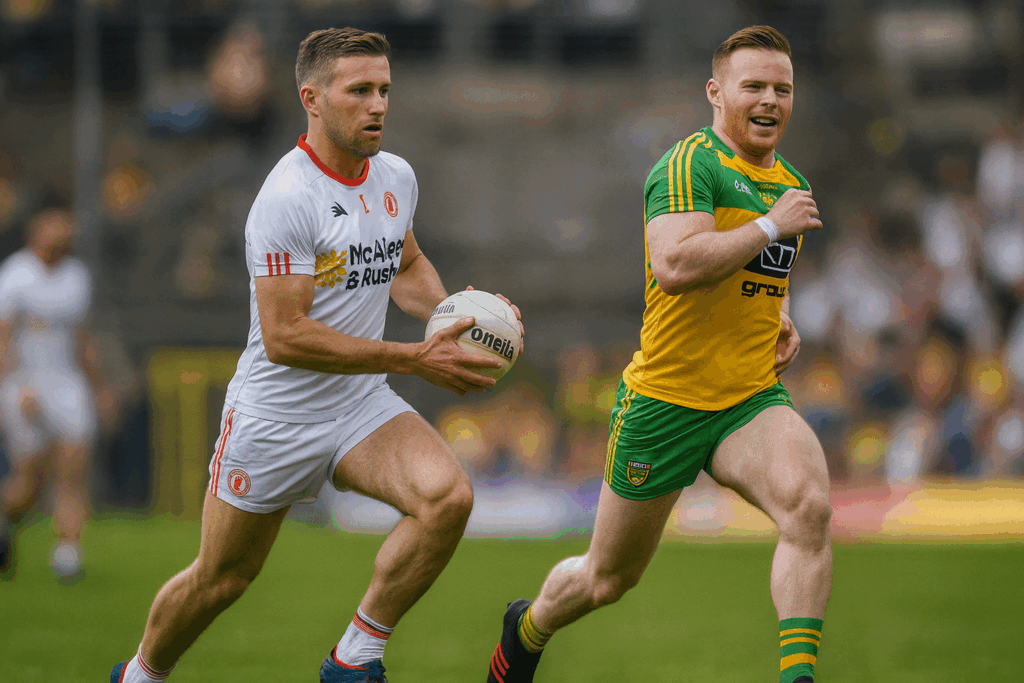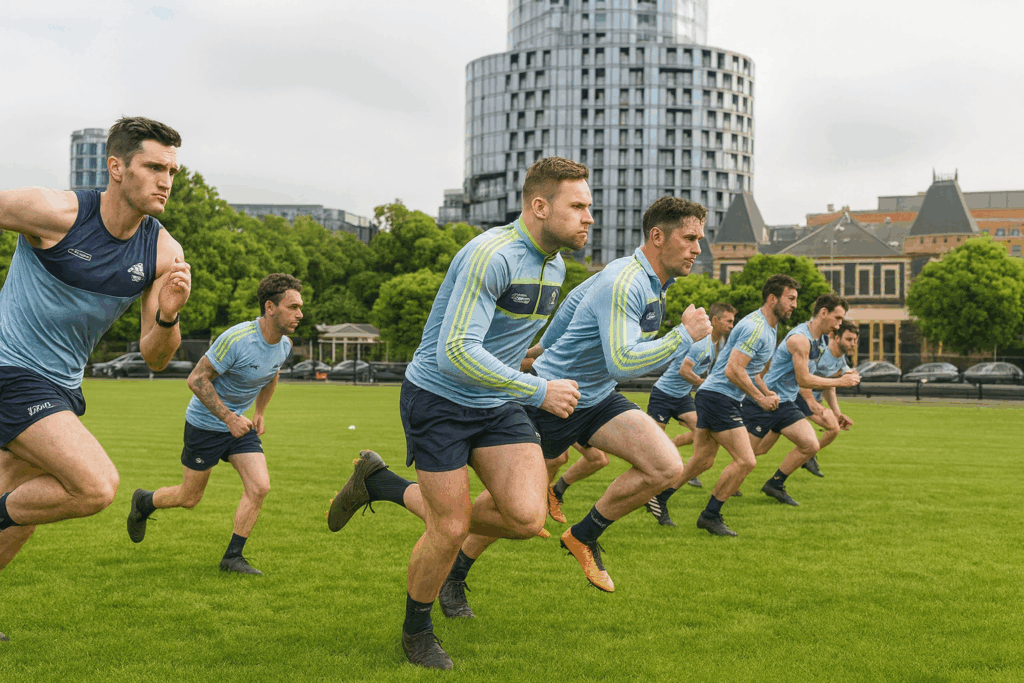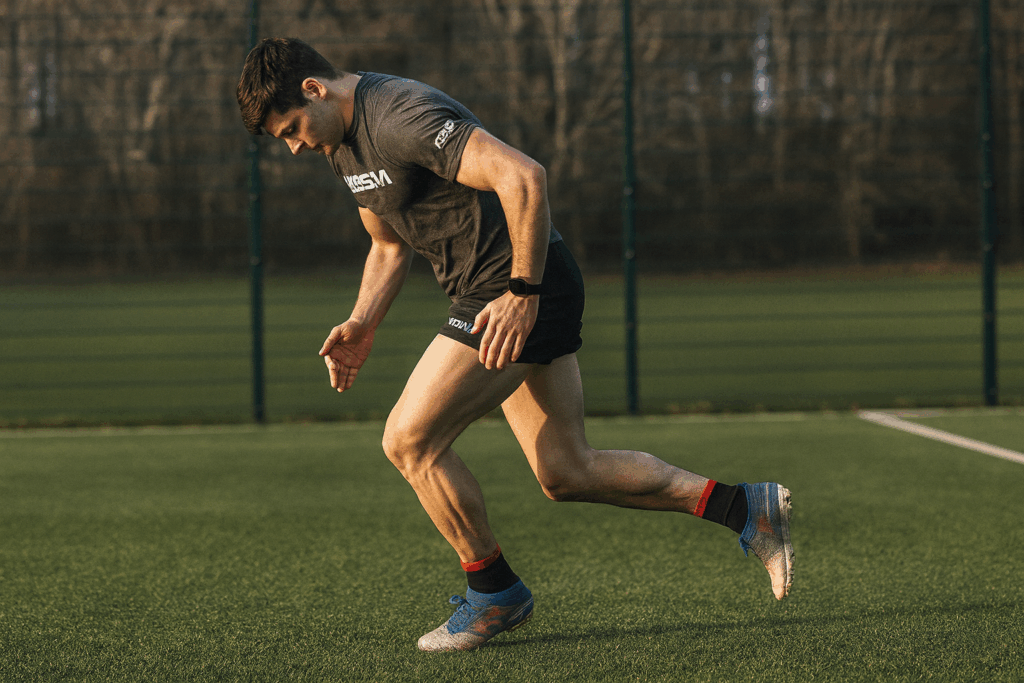Introduction
Strength training is a cornerstone of Gaelic games, enhancing performance, reducing injury risk, and building resilience for the demands of football, hurling, and camogie. This guide combines evidence-based practices and practical insights to provide GAA players and coaches with an actionable framework for strength development.
By the end of this guide, you will:
- Understand the importance of strength in GAA performance.
- Learn position-specific strategies to optimize training.
- Access structured, season-long programs to build strength and power.
The Role of Strength in GAA
Strength is vital for:
- Explosive Power: Required for sprinting, jumping, and tackling.
- Durability: Reduces the risk of common injuries like hamstring strains and groin pulls.
- Performance Longevity: Sustains effort over high-intensity matches.
Research Insight: Full-backs and midfielders demonstrate higher absolute strength compared to other positions, highlighting the need for tailored training based on positional demands.
Strength Metrics for GAA Positions
| Position | 1RM Deadlift (kg) | 1RM Bench Press (kg) |
|---|---|---|
| Full Back | 145.8 ± 10 | 110 ± 15.4 |
| Half Back | 152.8 ± 10.4 | 111 ± 15.2 |
| Midfield | 160.6 ± 15.6 | 112 ± 15.2 |
| Half Forward | 147.4 ± 4.2 | 91.5 ± 5.6 |
| Full Forward | 139.8 ± 15.1 | 88.0 ± 5.7 |
Source: Anthropometric and performance profile of elite Gaelic football players.
Principles of Strength Training
Progressive Overload, Specificity, and Recovery
- Progressive Overload:
- Gradually increase weights, reps, or intensity to stimulate muscle growth and adaptation. Consistent progression ensures long-term strength improvements.
- Specificity:
- Tailor exercises to mimic game demands. For instance, use unilateral movements like Bulgarian split squats to prepare for cutting and pivoting during play.
- Recovery:
- Adequate rest is essential. Schedule 48-72 hours between sessions targeting the same muscle groups. Incorporate deload weeks to manage fatigue and prevent overtraining.
Lifting Heavy vs. Lifting Light
- Lifting Heavy:
- Activates higher motor unit recruitment, improving maximal force production. Use this approach to develop tackling strength and explosive power.
- Lifting Light:
- Focuses on speed-strength and movement efficiency. For example, use 50-60% of 1RM with faster bar velocities to enhance sprinting mechanics.
Effective Reps and Training to Failure
- Effective Reps:
- The last 5 reps near failure recruit the most muscle fibers and are highly effective for hypertrophy and strength gains. Prioritize these in hypertrophy phases.
- Training to Failure:
- Use sparingly, particularly in the off-season, to maximize adaptation. Avoid during the in-season to reduce fatigue and preserve recovery.
Percentage-Based Programming and RIR (Reps in Reserve)
- Percentage-Based Programming:
- Structure load based on 1RM:
- Strength: 80-90% 1RM for 4-6 reps.
- Hypertrophy: 65-75% 1RM for 8-12 reps.
- Speed-Strength: 50-60% 1RM for 3-6 reps.
- Structure load based on 1RM:
- Reps in Reserve (RIR):
- Maintain 1-2 RIR during most sets for balance between intensity and recovery. Push closer to 0 RIR for maximal effort during key lifts in peak phases.
Core Strength Exercises for GAA Players
1. Compound Lifts
- Squats (Back and Front): Develop lower-body strength for jumping and tackling.
- Deadlifts: Build posterior chain power for sprinting and stability.
- Bench Press: Enhance upper-body strength for physical confrontations.
2. Accessory Movements
- Bulgarian Split Squats: Improve unilateral strength and balance.
- Romanian Deadlifts (RDLs): Target hamstrings to reduce injury risk.
- Rotational Cable Presses: Mimic twisting movements during striking and tackling.
3. Explosive Power Exercises
- Box Jumps: Develop reactive power for quick changes in direction.
- Medicine Ball Slams: Train explosive upper-body movements.
- Power Cleans: Enhance full-body explosiveness.
Position-Specific Training Focus
| Position | Training Focus | Key Exercises |
|---|---|---|
| Goalkeepers | Lateral movement and reflex strength | Side lunges, rotational presses |
| Full Backs | Tackling and physical durability | Heavy deadlifts, sled pushes |
| Half Backs | Speed and agility | Bulgarian split squats, box jumps |
| Midfielders | Strength-endurance balance | Squats, speed-endurance intervals |
| Half Forwards | Explosive acceleration | RDLs, medicine ball slams |
| Full Forwards | Power for goal-scoring opportunities | Power cleans, single-leg bounds |
Block Periodisation for GAA Strength Training
Capacity Phase
- Focus: Build a foundation of work capacity and general strength.
- Duration: 4-6 weeks.
- Example Program:
- Squats (4×8 @ 65-70% 1RM, 2 RIR).
- Bench Press (4×10 @ 60-65% 1RM, 3 RIR).
- Romanian Deadlifts (4×10 @ moderate weight).
- Accessory work: Bulgarian split squats, cable rows, core stability exercises.
Intensity Phase
- Focus: Develop maximal strength and power.
- Duration: 4-6 weeks.
- Example Program:
- Squats (4×5 @ 85-90% 1RM, 1-2 RIR).
- Deadlifts (4×4 @ 90% 1RM, 1 RIR).
- Bench Press (4×6 @ 80% 1RM).
- Explosive work: Power cleans, box jumps, medicine ball slams.
Realisation Phase
- Focus: Peak strength and integrate into sport-specific demands.
- Duration: 2-4 weeks.
- Example Program:
- Squats (3×3 @ 90-95% 1RM, 0-1 RIR).
- Bench Press (3×3 @ 90% 1RM).
- Power cleans (4×4 @ 70% 1RM).
- Game-relevant drills: Sled pushes, reactive agility drills.
Injury Prevention Through Strength Training
- Posterior Chain Focus:
- Strengthen hamstrings and glutes to reduce ACL and hamstring injuries.
- Exercises: Romanian Deadlifts, Nordic Curls.
- Core Stability:
- Improve balance and control during dynamic movements.
- Exercises: Dead Bugs, Pallof Presses.
- Groin Strengthening:
- Prevent adductor strains with Copenhagen Planks.
Monitoring and Assessing Strength Progress
- 1RM Testing:
- Assess maximal strength in squats, deadlifts, and bench press.
- Countermovement Jump (CMJ):
- Use jump tests to track improvements in power output.
- Functional Movement Screens (FMS):
- Identify movement limitations and address them with corrective exercises.
Sample Weekly Training Schedule
| Day | Focus | Key Workouts |
|---|---|---|
| Monday | Lower Body Strength | Squats, Deadlifts, Bulgarian Split Squats |
| Wednesday | Upper Body Strength | Bench Press, Pull-Ups, Rotational Cable Presses |
| Friday | Explosive Power | Power Cleans, Box Jumps, Medicine Ball Slams |
| Saturday | Active Recovery | Light cycling, yoga, foam rolling |
Conclusion
Strength training is an indispensable part of GAA performance, benefiting players across all positions. By following this structured guide, coaches and players can build strength, enhance power, and prevent injuries, ensuring peak performance on game day. Use the data-driven insights and training plans to create impactful programs that address the unique demands of Gaelic football, hurling, and camogie.
Take the next step in your training journey today and empower your team to excel on the pitch!





